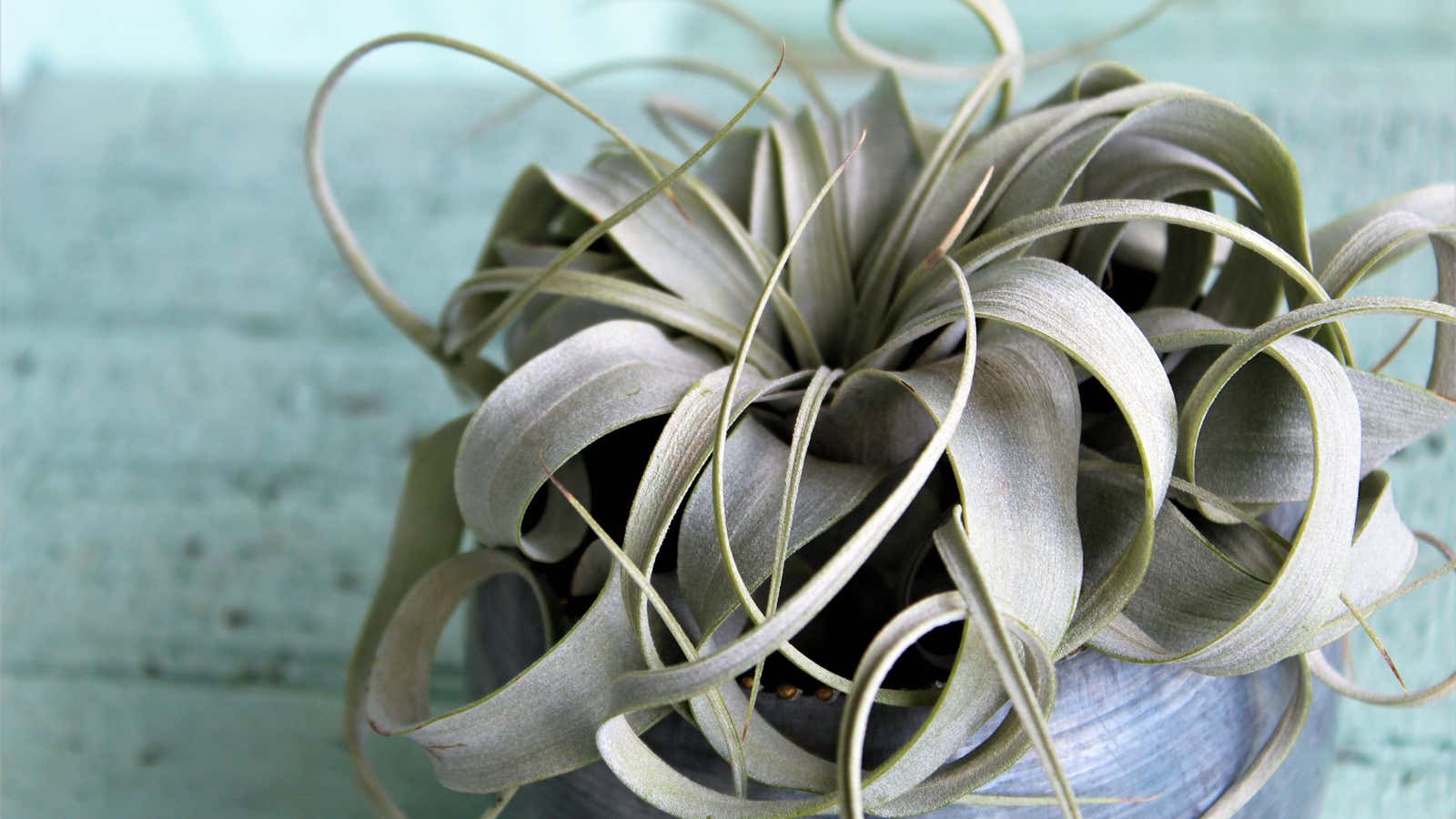How to Care for Air Plants

Despite the classic excuse for not having a green thumb, keeping a houseplant alive has more to do with the ability to schedule and remember than it does with being born without the fake gene that makes you a successful gardener. (And if you have a literally green thumb, you might want to be looked at by the medical profession.)
But some houseplants are definitely easier to care for than others, and people who travel a lot or who have a hard time remembering to water their plants may want to choose more self-sufficient varieties. And when it comes to low maintenance, air plants are hard to beat. However, they are not completely silent and require periodic maintenance. Here’s what you need to know.
What is an air installation?
Officially called tillandsias, there are over 600 species of air plants . And although they are native to the southern parts of the United States and Central and South America, they can be grown indoors in any climate. And yes, they get their name because they don’t need soil to grow.
Air plants are epiphytes , “meaning they use their roots to cling to supports such as tree branches and rocks, similar to how orchids grow,” according to the Farmers’ Almanac . “Instead of taking in water and nutrients through their roots, they use trichomes, special scaly structures on their leaves, to do the job.”
How to care for an air plant
First of all, never plant an air plant in soil or place it in a terrarium. Instead, place them in a cup, bowl, or vase and place them in an area that receives four to six hours of filtered natural light each day. Also, make sure the temperature is between 50 and 90 degrees (which shouldn’t be a problem indoors).
Air plants need to be soaked, not watered in the traditional sense of once every two weeks . To do this, you need to take the plant out of its usual home and immerse it in a bowl of either rainwater or bottled drinking water (softened and / or tap water contains minerals that can harm air plants) for about an hour .
Shake the plant after bathing to remove as much water as possible (so it doesn’t rot when it returns to its regular pot or vase). If the leaves of an air plant begin to turn brown, this means that it needs to be watered more often. And if some leaves die off completely, cut them off with sharp scissors.